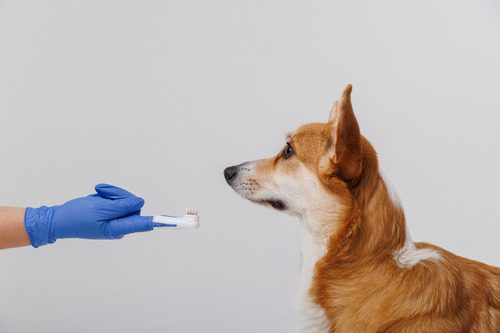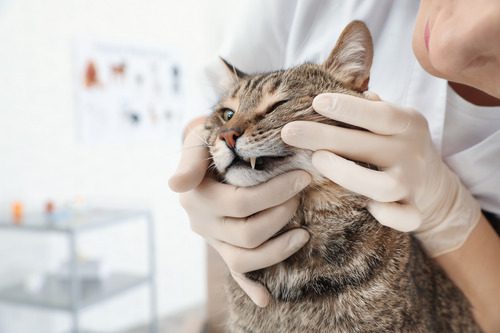Dog Ear Infection Symptoms
Ear infections can be extremely uncomfortable or even painful. Some breeds of dogs are more susceptible to them and, depending on the cause, most ear infections can be treated.
Types of Ear Infections
There are three types of ear infection in dogs. If you suspect your dog has an ear infection, it’s important to take them to the veterinarian.
Otitis Externa
Otitis externa is the most common ear infection. This occurs when the cells that line the outside of the ear canal become inflamed.
Otitis Media
Otitis media is an infection in the middle of the ear canal and usually occurs after prolonged otitis externa.
Otitis Interna
Otitis interna is when the inner ear is inflamed due to infection. This is the most severe type of ear infection and can lead to facial paralysis, deafness or vestibular signs, which include:
- Head tilt
- Loss of balance and coordination
- Constant circling in one direction
- Nausea and vomiting
- Loss of appetite and reluctance to drink
- Having a wide stance while standing
Causes of Ear Infections in Dogs
Unlike adult humans, dog’s ear canals are more vertical and form an L-shape that holds in fluid more easily, which makes them more susceptible to ear infections. The most common causes of ear infection are bacteria, yeast, or a mix of both. Some puppies and young dogs may also have ear mites, which can be itchy and even cause infection.
The most common factors that lead to ear infection are:
- Moisture – Because of that L-shaped ear canal, moisture from bathing, swimming or even just rain may not drain. This is especially true in dogs with long, floppy ears.
- Endocrine disorders – Hypothyroidism or Cushing’s disease has been known to cause chronic ear infections in dogs.
- Wax build-up – Some earwax is good; it is a natural moisturizer that keeps the inside of the ear from getting too dry and traps dirt and dust before it reaches deeper into the ear canal. But if your dog’s ears produce an overabundance of earwax (brown, smelly discharge), it can prevent proper draining and ventilation of the ear canal and cause infection.
- Autoimmune disorders – Autoimmune disease can slow your dog’s natural ability to fight off infection. This may lead to the infection worsening at a quicker pace.
- Ear canal injury – Injury usually causes inflammation and can prevent proper draining, leading to infection.
- Overcleaning – Cleaning your dog’s ears too often can lead to infection because there’s less earwax to serve as a natural defense against dirt, dust and dryness and because the abrasiveness of the cleaning causes irritation and inflammation of the ear tissue.
- Foreign bodies – Your pup’s body is designed to fight and rid itself of anything that’s not supposed to be in there, which, again, leads to inflammation and infection.
- Food sensitivities and skin allergies – If your dog is allergic to something, it may lead to an increase of ear infection because his body is busy fighting off the allergen instead of the infection.
Diagnosing a Dog Ear Infection
If you suspect your dog has an ear infection, quick treatment is important not only for their comfort but for their overall wellness. Treating an infection on the outside of the ear canal is much simpler than when it goes deeper.
When you get to your veterinary appointment, your vet will want to know:
- What your dog’s symptoms are, such as pain, discharge, odor or swelling.
- How long the symptoms have been going on.
- Any medications your dog may be taking.
- What your dog’s diet is.
- If your dog has any underlying conditions, like autoimmune disorders or allergies.
- How often you clean your dog’s ears and what product you use.
- Activities your dog has participated in recently, such as swimming, baths or grooming.
- If there is a history of ear infections.
- Whether you trim or pluck the hair in your dog’s ears.
Your vet will then examine your dog’s ears by gentle touch to assess how painful they are and by looking for redness, discharge or swelling. An otoscope is used to look at the ear canals and eardrums.
Your vet may take a culture of samples from the ear to determine if the infection is bacterial or fungal. In severe or chronic cases, your vet may order x-rays or biopsies to determine if there’s an underlying factor, such as a foreign object or cancer.
Treatments for Dog Ear Infections
At your appointment, your veterinarian will carefully clean your dog’s ears with a medicated cleanser. They might send you home with the cleanser and a topical medication to apply once or twice daily. In cases of a fungal – usually yeast – infection, your vet may prescribe an antifungal cream or pills.
If the infection is bacterial in nature, antibiotics might also be sent home. In severe cases, anti-inflammatory medications may be prescribed.
Uncomplicated ear infections typically clear up in one to two weeks after treatment starts. If the infection is due to underlying causes or conditions, it may take months to resolve or could be a chronic problem. Following your veterinarian’s instructions carefully is important for treating and healing ear infections.
Prevention
Like with most disease, prevention is best. Make sure you dry your pup’s ears thoroughly after bathing or swimming. Cleaning your dog’s ears can also be an effective preventative measure, particularly if they are prone to chronic ear infections.
How often you clean your dog’s ears is dependent upon its breed, coat, activity level, ear wax production and age. This frequency should be determined by your veterinarian to prevent ear infections that can result from over cleaning the ears.
Dogs with normal ears should have their ears cleaned no more than once a month. Dogs with floppy ears or those that swim regularly or get their ears wet often might need more frequent cleanings.
Gentleness is key when cleaning ears. Ask your veterinarian about how often you should clean your pup’s ears and the best techniques to do so.
Recent Posts
Firework Safety & Anxiety Relief for Pets This Fourth Of July
Firework Safety & Anxiety Relief for Pets This Fourth of July The Fourth of July is a…
Dental Cleaning for Dogs: Why It’s Important
Dental Cleaning for Dogs: Why It’s Important When was the last time you checked your dog’s teeth?…
Cat Gingivitis: Symptoms, Causes, and Treatment
Cat Gingivitis: Symptoms, Causes, and Treatment Your cat’s mouth plays a crucial role in their overall health,…
Managing Cat and Dog Anxiety During the Holidays
Managing Cat and Dog Anxiety During the Holidays Let’s face it: our pets are part of our…
Managing and Treating Joint Pain in Senior Pets
Managing and Treating Joint Pain in Senior Pets November is Senior Pet Month, and it’s the purr-fect…
About Bowman Animal Hospital & Cat Clinic
Established in 1986 by Dr. Gale Bowman, Bowman Animal Hospital and Cat Clinic is dedicated solely to the health and well-being of our pet community. We are a team of compassionate veterinarians and pet lovers who invest our time and resources into providing the very best medical care to your pet.







